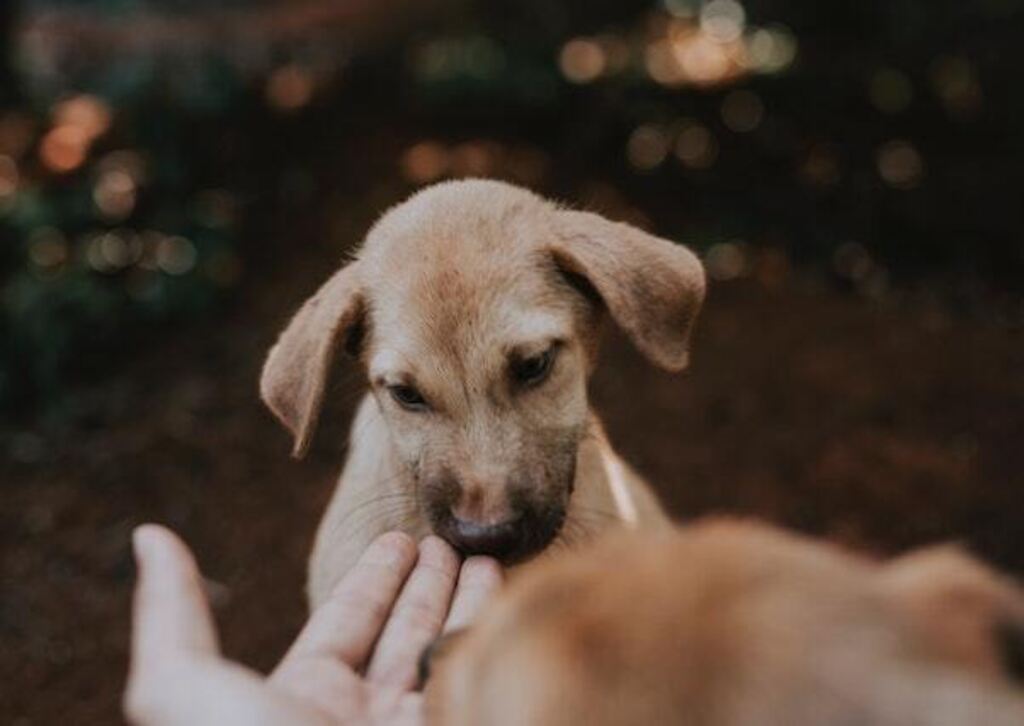Have you ever wondered why dogs seem to have an unusual fascination with smelling private areas? This behavior can be disconcerting for many individuals, particularly those who are not familiar with dog body language and canine communication.
However, it is essential to understand that this behavior is entirely normal for dogs and is an integral part of their social and communication etiquette.
Dogs have an incredibly powerful sense of smell, which is over 10,000 times more acute than that of humans. Canine scent detection is a vital means of communication and social behavior for dogs and is an instinctual behavior deeply ingrained in their DNA.
So, what does it mean when a dog smells your private area? In this article, we will look at the science behind canine olfactory systems, explore dog body language and behavior, discuss canine social norms, and provide tips for handling situations where dogs smell private areas.
Key Takeaways
- Dogs have a highly developed sense of smell, and sniffing is a natural way for them to gather information about their surroundings and people.
- When a dog sniffs your private area, it’s likely driven by curiosity and the unique scent you emit, rather than any malicious intent.
- Respect your dog’s boundaries and personal space during interactions, allowing them to approach you on their terms.
- Canine behavior is complex and can vary based on individual traits, past experiences, and the environment.
- Building a strong bond with your dog involves understanding and appreciating their natural behaviors, including their keen sense of smell and communication cues.
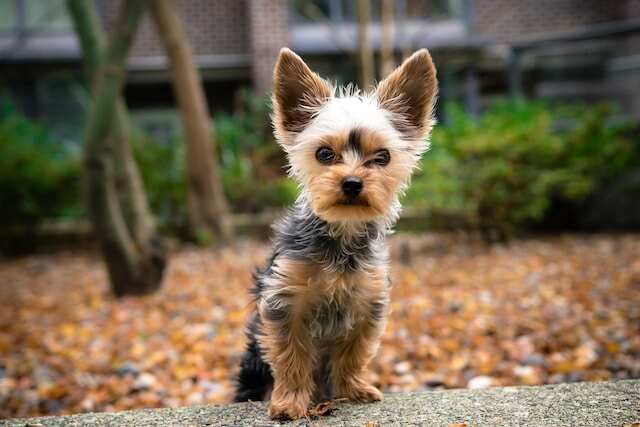
What Does It Mean When a Dog Smells Your Private Area?
A dog smelling your private area is a natural behavior driven by their exceptional sense of smell. It helps them gather information about your health, pheromones, and more. While it may seem awkward to us, it’s a normal canine way of understanding social cues.
Respecting their behavior is crucial for a healthy human-canine relationship. Always prioritize boundaries and consider the dog’s comfort and consent in any interaction.
The Science Behind Canine Olfactory System
Understanding a dog’s sense of smell is key to comprehending their behavior, including why they may sniff someone’s private area. Dogs have an extraordinary olfactory system that helps them communicate and gather information about the world around them.
Unlike humans, dogs have around 300 million olfactory receptors in their noses, which is 50 times more than humans. They also have a specialized olfactory epithelium, a thin layer of tissue in the nasal cavity, which enhances their sense of smell.
When a dog inhales, air enters the nasal cavity and interacts with the olfactory epithelium, creating a chemical sensation that the dog’s brain interprets as a smell. This process allows them to distinguish between various scents, even in small concentrations.
Dogs also have an additional organ called the vomeronasal organ, or Jacobson’s organ, which is located in the roof of their mouths. This organ helps dogs detect pheromones, a type of chemical communication used by animals to signal social and reproductive information.
The Scenting Instinct
Dogs have an instinctual behavior associated with scent detection, which is why they are commonly used for tasks such as tracking, search and rescue, and even detecting diseases like cancer. Their keen sense of smell allows them to identify and track scents that humans would not notice.
This instinctual behavior is also why dogs may be inclined to sniff someone’s private area. In their world, scent is a primary means of communication, and they gather information about other dogs and people through the scents they leave behind.
By smelling someone’s private area, dogs can gain insight into their identity, state of mind, and even their recent activities. While this behavior may seem intrusive to humans, it is just a normal part of a dog’s social behavior.
Dog Body Language and Behavior
Understanding a dog’s body language and behavior can provide valuable insight into their actions, including when they sniff someone’s private area. Here are some cues to look out for:
| Cue | Explanation |
|---|---|
| Curiosity | When a dog sniffs someone’s private area, it may be out of curiosity. They use their sense of smell to gather information about the person. |
| Dominance | In some cases, a dog may sniff someone’s private area as a display of dominance. This behavior may be accompanied by other dominant signs such as standing tall, raised hackles, and growling. |
| Submission | On the other hand, a dog may also sniff someone’s private area as a form of submission. This behavior is often accompanied by other submissive cues such as crouching, avoiding eye contact, and tucking the tail between the legs. |
| Communication through scent | Dogs communicate through scent, and sniffing someone’s private area is one of the ways they exchange information. They may be trying to determine the person’s gender, health status, or emotional state through the scent they leave behind in that area. |
It is important to note that not all dog sniffing behavior is the same, and it can be influenced by various factors such as the dog’s breed, age, and training. Therefore, it is crucial to observe the dog’s overall body language and behavior to determine the reason behind their actions.
Dog Body Language and Behavior
When observing a dog’s body language and behavior, here are some additional signs to look for:
- Raised hackles: This is a sign of aggression or fear.
- Wagging tail: A wagging tail can indicate excitement or happiness, but it can also indicate agitation or anxiety depending on the height and speed of the wag.
- Bared teeth: This is a clear sign of aggression and should be taken seriously.
- Ear position: Depending on the dog’s breed and mood, their ears may be perked up, relaxed, or flattened against their head.
By understanding these cues, you can better interpret a dog’s behavior and establish a positive relationship with them.
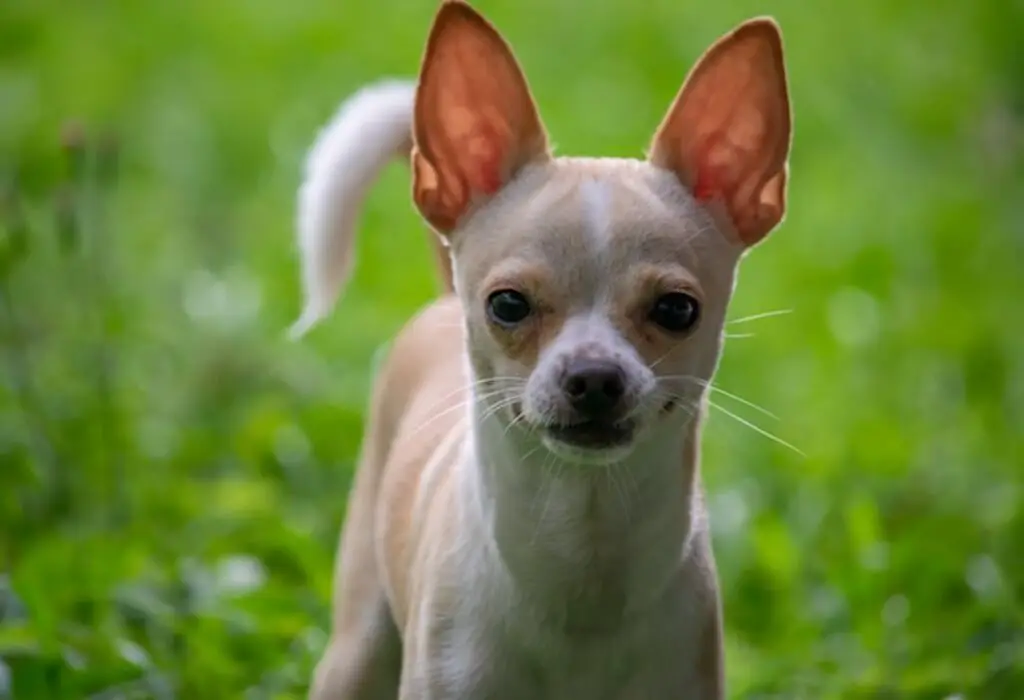
Canine Social Norms and Scent Marking
Dogs rely heavily on their sense of smell to communicate with one another and establish social hierarchies. Scent marking is a natural behavior in dogs, and it serves several important purposes.
| Purpose | Description |
|---|---|
| Identification | Leaving a scent mark helps dogs identify individuals and establish familiar territory. |
| Communication | Scent marking also serves as a form of communication between dogs, conveying information about social status, reproductive status, and other important factors. |
| Expression of dominance | Dogs may use scent marking to assert their dominance over other dogs and establish their place in the hierarchy. |
While scent marking is a normal and natural behavior, it can become problematic if a dog is excessively marking or marking in inappropriate areas. When a dog sniffs someone’s private area, it may be a way of gathering information and leaving their own scent mark. This behavior can be uncomfortable or even alarming for humans, but it is important to recognize that it is not necessarily a sign of aggression or ill intent.
Canine Social Norms and Scent Marking
Understanding canine social norms and scent marking can help owners better manage their dogs and address problematic behaviors. It is important to establish clear boundaries and provide appropriate outlets for marking behavior, such as designated areas in the yard or on walks. Consistent training and reinforcement can also help discourage excessive marking and prevent undesirable behaviors.
The Importance of Proper Dog Introduction and Training
When it comes to managing a dog’s behavior of smelling private areas, proper introduction and training is crucial. It’s essential to set clear boundaries for both the dog and the person they are interacting with.
Here are a few tips for introducing your dog to new people:
- Start slowly: Introduce your dog to new people in a quiet and controlled environment. Gradually increase the level of interaction as your dog becomes more comfortable.
- Use positive reinforcement: Reward your dog for calm and appropriate behavior around new people.
- Monitor body language: Watch for signs of discomfort or anxiety in your dog, such as tucking their tail or avoiding eye contact.
If your dog does exhibit behavior of smelling someone’s private area, it’s important to address the behavior and redirect their attention. Here are a few strategies for managing this behavior:
- Redirect: Give your dog a toy or treat to redirect their attention away from the person’s private area.
- Distraction: Engage your dog in a game or activity to distract them from the behavior.
- Reinforcement: Reward your dog for appropriate behavior and ignoring the private area.
It’s important to approach the situation calmly and avoid any punishment or negative reinforcement, as this can further reinforce the behavior and create an unsafe environment for both the dog and the person they are interacting with.
Seeking Professional Help
If your dog’s behavior of smelling private areas continues to be a problem despite your best efforts, it may be necessary to seek professional help. A qualified dog trainer or behaviorist can provide further guidance and support in managing this behavior and creating a safe and comfortable environment for everyone involved.

Understanding Dog-Owner Boundaries
Dogs are incredible companions, but it’s important to remember that they are animals with their own instincts and behaviors. It’s the responsibility of the owner to set boundaries and expectations for their dog. This not only ensures a safe and comfortable environment for all parties involved but also strengthens the bond between the dog and owner.
One crucial aspect of establishing boundaries is consistently enforcing rules and expectations. For example, if you don’t want your dog to sniff your private area, you must consistently redirect the behavior and provide positive reinforcement when they comply with your expectations.
Another important aspect is recognizing cues from your dog that indicate they are feeling uncomfortable or unsure. This may include body language such as cowering, growling, or barking. If you notice these behaviors, it’s important to respect your dog’s boundaries and avoid pushing them into situations they’re not comfortable with.
Respect Your Dog’s Personal Space
Just like humans, dogs have their own personal space and boundaries. It’s important to respect these boundaries and avoid overwhelming your dog with too much physical contact. This includes hugging, petting, and even leaning too close to your dog’s face.
Respecting your dog’s personal space not only promotes a healthy and positive relationship between you and your dog, but it also helps prevent your dog from feeling threatened or uncomfortable, which can lead to aggressive behaviors.
- Keep in mind that each dog is unique and may have different comfort levels when it comes to physical contact.
- Observe your dog’s body language and behavior to determine what types of physical contact they are comfortable with.
- Introduce physical contact gradually and always provide positive reinforcement when your dog responds positively to physical touch.
Establish Clear Communication
Clear communication is essential when it comes to setting boundaries with your dog. It’s important to understand your dog’s body language and vocal cues so that you can effectively communicate your expectations and enforce them consistently.
Additionally, it’s important to establish communication methods that work best for your dog. This may include using verbal cues, hand signals, or even a specific tone of voice. Whatever methods you choose, it’s important to be consistent and follow through with your expectations.
Seek Professional Help When Needed
If you’re struggling to establish boundaries with your dog or if your dog’s behavior is causing concern, don’t hesitate to seek professional help. Qualified trainers and behaviorists can provide guidance and support to help you and your dog work through any challenges and establish a healthy and positive relationship.
Remember, establishing clear boundaries and expectations with your dog is crucial for building a strong and positive bond. By understanding your dog’s instincts and behaviors and consistently enforcing your expectations, you can create a safe and harmonious environment for both you and your furry friend.
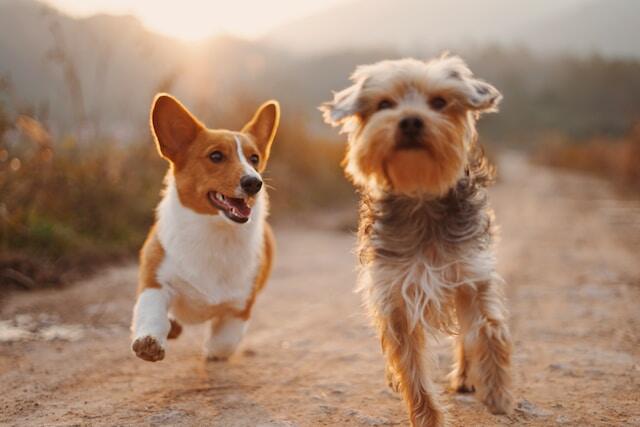
Addressing Misconceptions and Myths
The behavior of dogs smelling private areas often carries misconceptions and myths that can lead to misunderstandings. These misunderstandings can sometimes lead to unnecessary anxiety, fear, and even aggression towards dogs. Hence, it is essential to address and debunk some of the common misconceptions and myths surrounding this topic.
- Myth: Dogs Smell Private Areas to Dominate Humans.
Some people associate the behavior of dogs smelling private areas with a dog’s desire to assert dominance over humans. However, this is not accurate, and the behavior is not rooted in dominance. Instead, dogs use their sense of smell as a primary means of communication.
- Myth: Dogs that Smell Private Areas are Aggressive.
Dogs that smell private areas are not inherently aggressive or threatening. Dogs may sniff private areas for a variety of reasons, including curiosity, social recognition, and gathering information. It is essential to understand the context and body language of a dog before interpreting their behavior as aggressive.
- Myth: Dogs that Smell Private Areas are Sexually Attracted to Humans.
This is a common misconception that is not true. It may be uncomfortable and embarrassing for a person to have their private areas sniffed by a dog, but it is not a sexual behavior. Dogs use their sense of smell to gather information about their environment and communicate with other dogs.
- Myth: All Dogs Sniff Private Areas.
This is not true. While dogs use their sense of smell for communication and gathering information, not all dogs will smell private areas. Some dogs may show little to no interest in this behavior, while others may smell private areas more frequently.
It is essential to understand that dogs are highly social animals that communicate through a variety of behaviors, including scent. By debunking these misconceptions and myths, we can better understand and appreciate the complex social behavior of dogs.
Tips for Handling Dogs Smelling Private Areas
If your dog exhibits behavior of smelling private areas, there are steps you can take to manage it. Here are some tips:
- Redirect the behavior: If you notice your dog sniffing a private area, distract them with a toy or treat and redirect their attention elsewhere.
- Set boundaries: If you are uncomfortable with your dog sniffing your private area, firmly but calmly say “no” and move away.
- Train your dog: Consistent training can help modify and manage your dog’s behavior. Consider working with a professional trainer or behaviorist.
- Provide appropriate socialization: Socializing your dog with different people and situations can help reduce anxiety and unwanted behavior.
- Keep your dog leashed: When in public, keep your dog leashed to prevent them from engaging in unwanted behavior.
- Respect personal space: Just like people, dogs have a need for personal space. Avoid forcing interactions or invading their space.
- Stay calm: If your dog is exhibiting unwanted behavior, try to remain calm and avoid reacting with fear or anger, which can escalate the situation.
Remember, every dog is different and may require different management strategies. It’s important to understand your dog’s behavior and work with them in a patient and positive manner to address any issues.
Seeking Professional Help
While many cases of dogs smelling private areas can be managed through basic training and behavioral interventions, there may be situations where professional help is necessary. Qualified trainers or behaviorists can provide further guidance and support for addressing this behavior, particularly if it is related to aggression or other concerning issues.
If you are unsure how to manage your dog’s behavior related to smelling private areas, or if you have concerns about their overall behavior and socialization, it is important to seek professional help. A trained and experienced professional can help you identify the underlying causes of your dog’s behavior and provide effective solutions tailored to your unique situation.
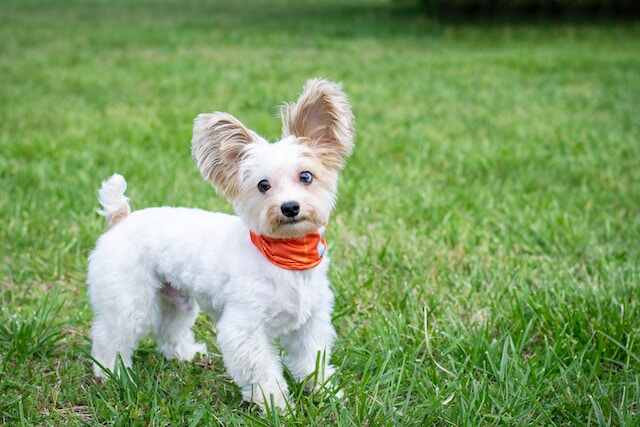
Tips for Handling Dogs Smelling Private Areas
It’s not uncommon for a dog to be curious and attentive when they encounter a new person, which can often involve sniffing their private area. While this behavior can be uncomfortable and even embarrassing for some people, it’s important to remember that it is a natural instinct for dogs and can be managed effectively through some simple tips and strategies.
Establish Boundaries
Setting boundaries with your dog is crucial for managing their behavior, especially when it comes to sensitive situations like dogs smelling private areas. If your dog exhibits this behavior around guests or strangers, ensure they are not invading their personal space or making them uncomfortable. Keep your dog on a leash or in a separate room to prevent them from engaging in this behavior and establish clear boundaries right from the beginning.
Redirect their Attention
If you notice your dog showing interest in private areas, try to redirect their attention towards a toy or another activity that they enjoy. This will not only help to manage their behavior but also keep them entertained and engaged in a positive activity.
Training and Positive Reinforcement
Training your dog is essential for preventing unwanted behavior from occurring. Teach your dog basic commands like “sit” and “stay” and reward them with positive reinforcement when they follow through. This will help them understand what is expected of them and reinforce good habits.
Seek Professional Help
If your dog’s behavior persists and cannot be managed effectively, consider seeking professional help from a qualified trainer or behaviorist. They can provide expert guidance on how to deal with this behavior and develop a comprehensive plan for managing your dog’s behavior effectively.
Respect Personal Space
Remember that everyone has the right to their personal space, including your dog. If you notice your dog exhibiting a particular behavior that makes someone uncomfortable, be respectful and take appropriate measures to address the situation. This could involve keeping your dog on a leash or in a separate room, depending on the situation.
Stay Calm and Patient
Managing your dog’s behavior can be a challenging and frustrating experience, but it’s important to remain calm and patient throughout the process. Your dog will pick up on your emotions and respond accordingly, so maintaining a positive and patient demeanor is key to managing their behavior effectively.
Conclusion
In conclusion, when a dog smells your private area, it’s not an act of rudeness or invasion but rather a natural behavior guided by their keen sense of smell.
Understanding the reasons behind this behavior can help us appreciate the fascinating world of canine communication and their ability to gather information about us.
Remember, respecting boundaries and ensuring the dog’s comfort and consent in any interaction is essential for building a trusting and harmonious relationship with our furry companions.
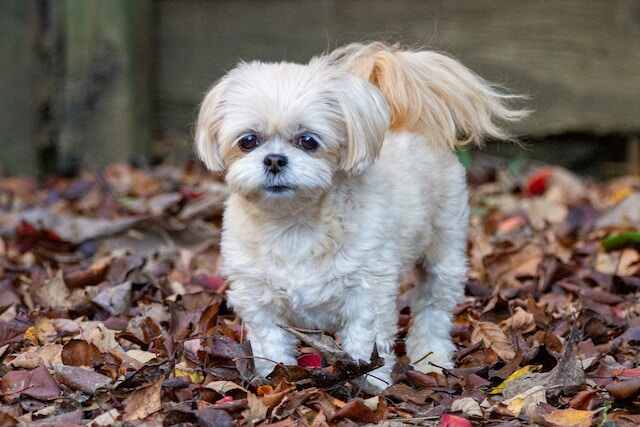
(FAQs) about Dogs Smelling Private Areas
1. Why do dogs smell private areas?
Dogs have a keen sense of smell and are naturally curious creatures. Smelling private areas is a way for dogs to gather information and communicate with other dogs.
2. Is it normal for dogs to smell private areas?
Yes, this is a normal behavior for dogs and is part of their natural instinct to gather information and communicate with other dogs.
3. Is it safe for dogs to smell private areas?
While this behavior is generally safe, it can be uncomfortable and even embarrassing for some people. It’s important to manage your dog’s behavior and set clear boundaries to ensure the comfort and safety of all parties involved.
4. Can this behavior be trained out of a dog?
Yes, this behavior can be trained out of a dog. Effective training and positive reinforcement can help prevent this behavior from occurring or manage it effectively if it does occur.

